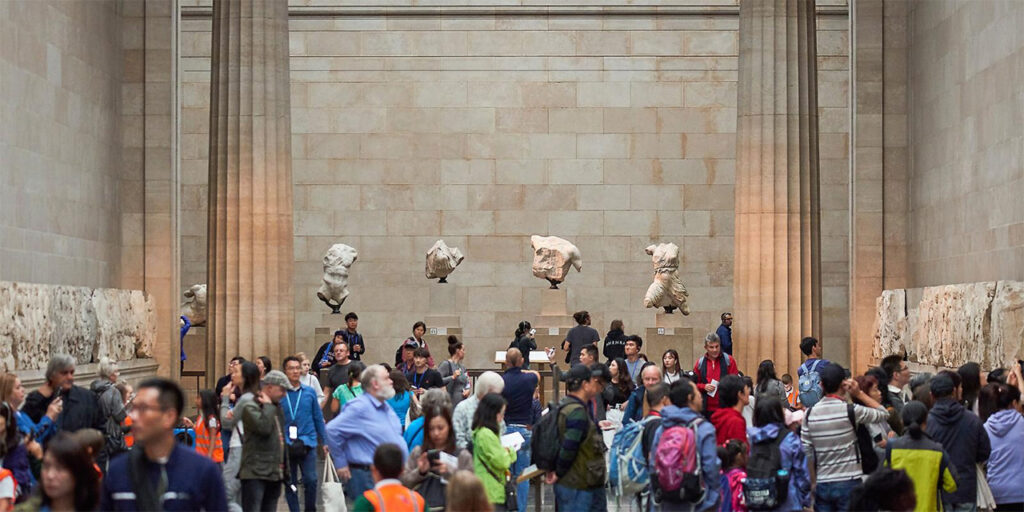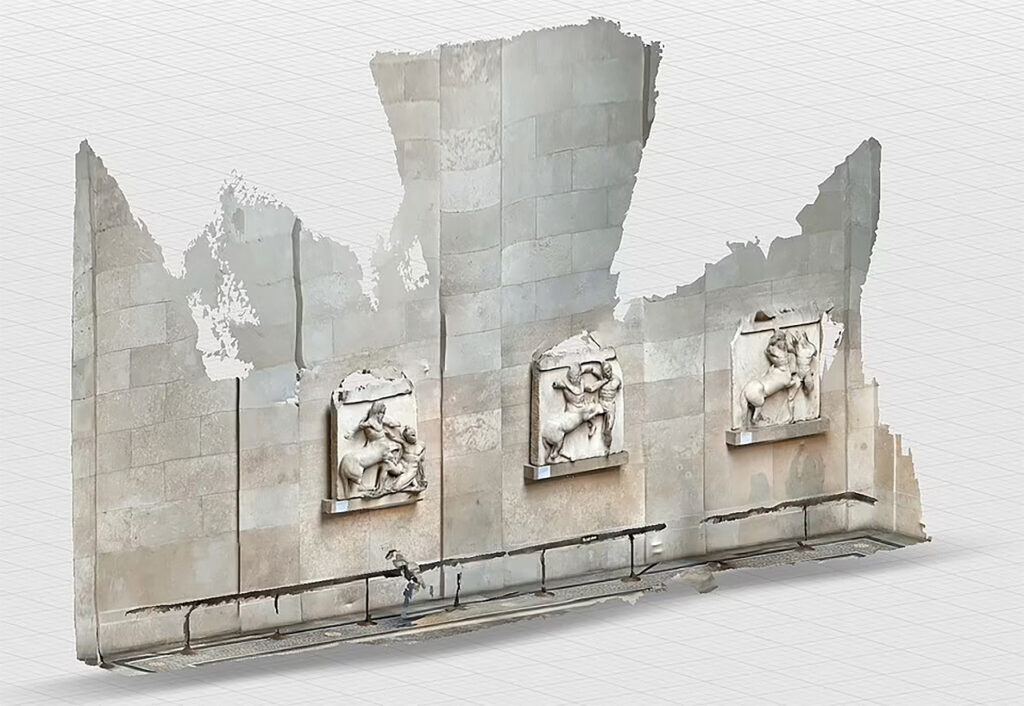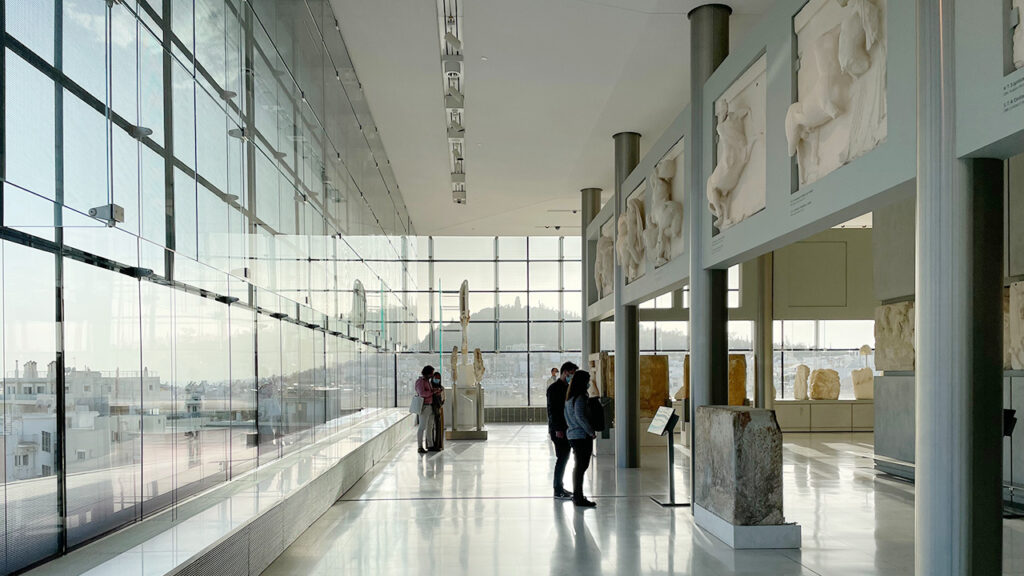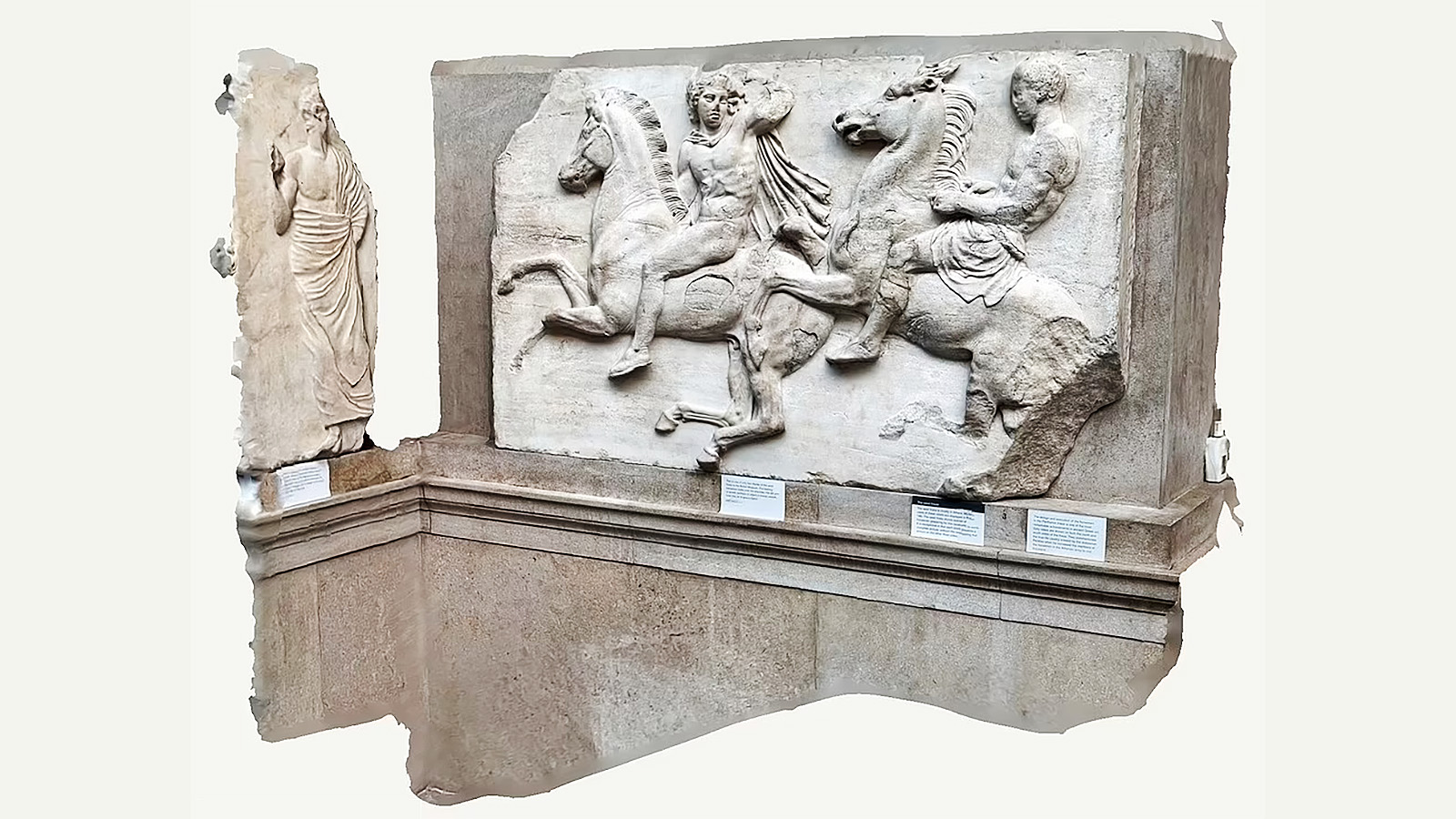In March, the Institute for Digital Archaeology (IDA) found itself in a spot. The Oxford-based organization had 3D-scanned the Parthenon Marbles at the British Museum — as part of a project to create replicas of the metopes to make the case for repatriating the originals — an undertaking that had gone ahead despite the institution rebuffing the IDA’s formal photography request. Post-scan, the museum deemed the activity “unauthorized,” even as its visitor guidelines explicitly permit the use of 3D imaging software in its galleries. By the end of the month, the IDA had apparently served the British Museum with a legal complaint.
“Our goal is not to foment conflict,” emphasizes Roger Michel, Executive Director of the IDA. “We inherited a conflict-intensive situation.” Indeed, from the outset, the IDA’s mission to preserve cultural heritage with the help of digital technologies is hardly controversial; but with its latest project, the group landed itself in the midst of a century-old dispute surrounding the restitution of the Parthenon Marbles.

The British Museum currently holds about half of the world’s surviving Parthenon Marbles, which it acquired from Lord Elgin in 1817. Image: British Museum
In 1817, as soon as Lord Elgin sold to the British Museum his haul of Classical Greek metopes and friezes, which he sawed and plundered from the Parthenon temple (hence: “the worst, dull spoiler,” per Byron), calls were made in publications and in Parliament to return the antiquities to Greece. And they’ve never ceased: most recently, the Acropolis Museum in Athens, which holds almost half of the surviving Parthenon Marbles, renewed its appeal to the British Museum to repatriate its half of the sculptures.
Which is where the IDA comes in. Its initiative to 3D-scan, model, and print reconstructions of the marbles to exhibit in place of the originals presents an opportunity to not just repatriate what was despoiled, but to deepen visitors’ understanding of the artifacts. The Parthenon Marbles, Michel points out, are currently being displayed in the museum’s Duveen Galleries without great context and in poor repair. But, he tells Jing Culture & Commerce, “reconstruction technology would allow the museum to do what museums are supposed to do, which is to educate people in a way that’s historically accurate.”

The IDA is capturing the Parthenon sculptures using LIDAR and photogrammetry, and modeling them in 3D to eventually sculpt historically accurate reconstructions. Image: © Institute for Digital Archaeology
With reconstruction, the sculptures could be intricately restored and re-sculpted with missing material and original pigments, in consultation with local art historians. They could be exhibited “as they appeared at the time they were made,” says Michel, in turn enriching the storytelling and study of Classical aesthetics. “People can have the same visual experiences they’re having now,” he adds, “exactly the same to the point where if you didn’t tell people, they wouldn’t know.”
Of course, the original marbles do carry with them a certain “metaphysical aura,” as Michel concedes — though one could argue that the same aura might well be similar or even enhanced if the sculptures were viewed in the Parthenon Gallery of the Acropolis Museum, which directly faces the ancient site where the actual Parthenon stands. Divorced from their country and culture of origin, the Greek artifacts in the British Museum form less of a display of the “richness, diversity, and complexity of all human history,” per the institution’s stance, and more a showcase of acquisition and acquisitiveness. Or in Michel’s words, “It’s the British Museum, but it’s filled with other people’s stuff.”

The Parthenon Gallery in the Acropolis Museum — which houses almost half of the surviving Parthenon Marbles, with gaps marking missing sculptures — offers a panoramic view of the ancient site where the Parthenon stands. Image: Luna Zhang / Unsplash
Such reconstructions are also not without precedent. Plaster reproductions of Classical sculptures, statues, and monuments were common sights in Western galleries in the 19th century, deemed more superior to photographs or sketches as they enabled art education and study in three dimensions. Though they would later make way for genuine articles as museums engaged in a heated acquisitions race, these cast collections have become historical artifacts in their own right (see: the Victoria & Albert Museum’s Cast Courts).
And the IDA is no stranger to reconstructing artifacts. In 2016, the team unveiled a 3D-printed replica of Palmyra’s Triumphal Arch, a 3rd century Roman monument in Syria that has since been demolished by ISIS militants. Created using a combination of stereo photography, 3D renderings, and 3D machining, the 20-foot model was installed in London’s Trafalgar Square before traveling to cities including New York City, Washington D.C., and Dubai, with plans for it to eventually reach Syria. A smaller replica of the arch, too, was acquired by the V&A.

The IDA’s reconstructed Triumphal Arch of Palmyra in Washington, D.C. Image: © Institute for Digital Archaeology
Similarly, IDA hopes to launch its recreated Parthenon Marbles on a public site, likely “proximate to the museum,” sometime this Summer. Again, Michel notes, this is not meant to be a confrontational project, but one that could support the British Museum if or as it approaches cultural restitution. “We’d like to help establish some sensible policies around the issue of repatriation,” he says. “It’s worth thinking in terms of what is a healthy cultural narrative for the UK today.”
To do that is to call for a reassessment of our relationship with objects — not just museums’ ties to the loot in their collections (now underway as the number of repatriations grows), but also how cultural audiences might receive and relate to artifacts, whether real or reconstructed.
Michel recollects a conversation he had with a group of young Syrians on the night the IDA’s Triumphal Arch was unveiled at Trafalgar Square; they said they’d driven up from Paris for the presentation, with one of them adding that she’d never once seen the monument in person, despite growing up near Palmyra. What did art created by Romans have to do with her, she’d thought. But this reconstruction, to her, captured historical and personal significance, embodying as it did “what’s happening today, what’s happening in [her] country, to friends and family,” Michel says. “This arch,” she told him, “represents for me far more meaning than the original arch ever had.”



